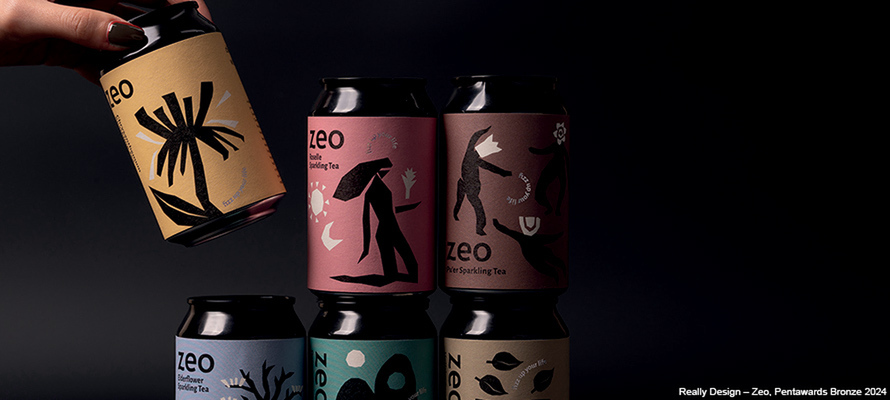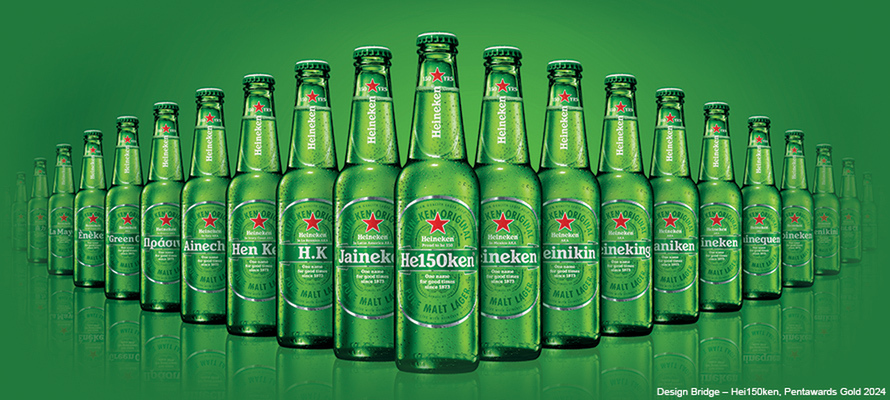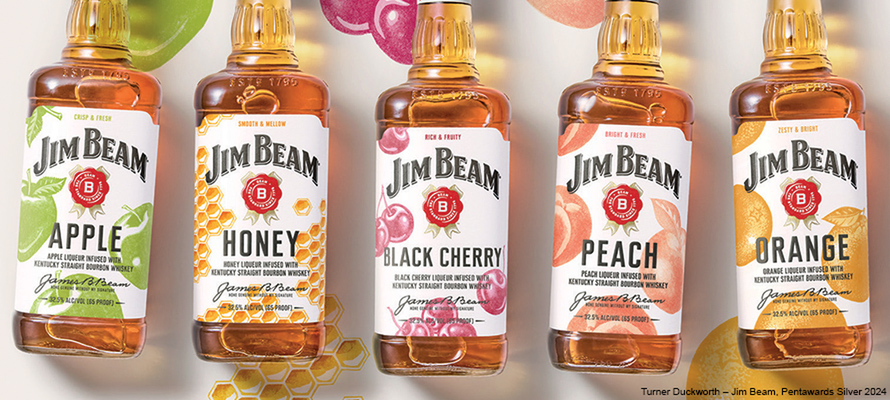Labeling: an Application Ecosystem
The labeling sector is an application ecosystem that involves the main printing technologies, all finishing and embellishment techniques, sophisticated converting systems, and software solutions for design, prepress, and workflow management.
By Alexia Rizzi | On PRINTlovers 105
When discussing labels from a production perspective—meaning the entire supply chain from design to finishing—it is impossible not to connect the evolution of this diverse and vibrant world of printed products to technological progress. Today, thanks to increasingly extensive and efficient production capabilities, the term “label” encompasses everything from traditional paper wet-glue labels to pressure-sensitive (PS) labels (commonly known as self-adhesive), wraparound labels (so called because they wrap around the product’s entire perimeter), and shrink sleeves (heat-shrinkable tubular films). Even in-mold labels (IML)—preprinted, usually on PP, and applied to plastic containers during the injection process directly inside the mold—fall within this category, despite not looking like traditional labels.
Another key factor is the range of processes that can be applied to those few centimeters of printed material, allowing labels to range from a “basic” aesthetic—think of the label on a mainstream private label jar of olives, printed in CMYK on standard paper—to the most elaborate and sophisticated labels for wine & spirits, high-end perfumery, and luxury goods. In many cases these are true works of craftsmanship, the result of an alchemy of refined design, premium substrates, advanced printing technologies capable of reproducing an ever-wider color gamut, complex embellishments, embossing, engraving, and original die-cuts.
Digital printing: unstoppable growth
At the latest edition of Labelexpo Europe, held in Brussels in September 2023, as many as 25 manufacturers of digital label presses exhibited. In recent years, digital technology—be it inkjet, LEPx with ElectroInk, or toner—has seen extraordinary growth across all printing sectors, and labeling in particular. The most obvious advantages of digital printing systems, whether sheet-fed or roll-to-roll, include the ability to produce short runs to serve a market segment demanding smaller batches and more frequent reprints; personalization capabilities for special events, campaigns, and limited editions, and increasingly also for large-scale projects—so-called mass personalization (think of Coca-Cola, Nutella, or Heineken’s mass-market one-to-one label campaigns); and reduced waste, both during make-ready and thanks to true on-demand production.
If these are the most widely recognized benefits, we should also consider that digital presses have become popular thanks to the productivity, reliability, quality, and versatility of the latest systems. A decisive factor is their ability to achieve an impressively wide color gamut: today, beyond CMYK, Orange, Violet, Green, Reflex Blue, Rhodamine Red, and Bright Yellow can be used, covering up to 97% of Pantone shades, with the addition of fluorescent inks and varnishes. Transparent and colored substrates can be printed using white inks available in both standard and premium versions, with coverage levels comparable to screen-printing white. Current digital presses can reach speeds of up to 120 linear meters per minute at 1200x1200 dpi resolution, with automated quality controls and compatibility with a wide range of materials, from natural, textured papers to vinyl films. This explains their success across the labeling market, from high-end quality applications (purely digital or hybrid systems combining inkjet modules inline with other technologies) to shrink sleeves and mass retail products requiring medium runs and frequent reprints.
Sustainability: the common denominator of the supply chain
Sustainability today is a transversal priority across the entire supply chain and a decisive factor for decision-makers from the earliest project stages. Brands demand transparency certifications from their suppliers regarding sustainable practices, both to meet emissions and carbon footprint regulations and to prepare environmental and social sustainability reports aligned with ESG standards.
Smart design in packaging and labeling now benefits from advanced R&D efforts by material producers, who are developing recycled and recyclable substrates, experimenting with alternative fibers such as hemp and bamboo, and promoting greater use of natural papers. Compostable adhesives and upcycling concepts are growing too, such as reusing silicone glassine liners, otherwise waste material, to give them a second life. Linerless labels are also expanding beyond their traditional application areas. These trends require technology suppliers to adapt printing systems to the most commonly used new substrates, ensuring performance not only in quality and consistency but also in productivity and profitability.
Ink development trends include water-based formulations, as well as primers and coatings designed with end-of-life in mind, facilitating deinking and recyclability. The same applies to new-generation toners that combine eco-sustainability with food-contact compliance.
Embellishment
Traditional embellishment techniques used to enhance labels—hot stamping, cold foil, embossing, screen printing, and coatings—are evolving with new materials. Foil manufacturers launch new options every year, featuring 3D holographic effects, glossy and matte metallics, pastel tones, transparent foils, and tactile or 3D elements. At the same time, foils are being engineered thinner yet more resistant, maintaining performance while improving sustainability. Hybrid printing systems allow customized production lines incorporating flexo coating units, screen printing, hot stamping, die-cutting, multi-layer labels, and more, achieving powerful visual and tactile results.
Current trends for premium labels show growing demand for micro-engraving with customized textures and designs, adding refinement to foils. Another direction is blind embossing, enhancing the tactile feel of the paper with minimal yet impactful decoration. New-generation digital embellishment systems now allow foil application without dies, as well as varnishes and polymers reproducing 2D and 3D effects, including overprintable metallics for brilliant, iridescent colors—even on mainstream products like shrink sleeves.
From an inkjet perspective, a recent innovation for narrow web printing achieves a high-quality matte finish in digital inkjet printing. Toner manufacturers are also partnering with embellishment suppliers to integrate inline foil modules. Thanks to the heat resistance of the latest toner formulations, it is now possible to apply transfer toner to selected label areas so that foils adhere precisely where indicated in the print file.
Software and artificial intelligence
Color management software, MIS and workflow solutions, as well as advanced quality-control and inspection systems (even for challenging features such as varnishes), are seeing major innovation in terms of efficiency, automation, and usability. User-friendly interfaces and artificial intelligence are making production increasingly intuitive and autonomous.
Integrated software and content-creation platforms that enable collaboration among all stakeholders in packaging and label production are not new, but cooperation between software developers and press manufacturers is growing closer, leading to increasingly sophisticated solutions. Notably, tools dedicated to “large-scale personalization” are emerging, enabling automated graphic creation with advanced 3D visualization integrated into workflow solutions, including e-commerce portals. Artificial intelligence is increasingly embedded in software and design tools for packaging and labels, speeding up color management for reprints and repurposing.





